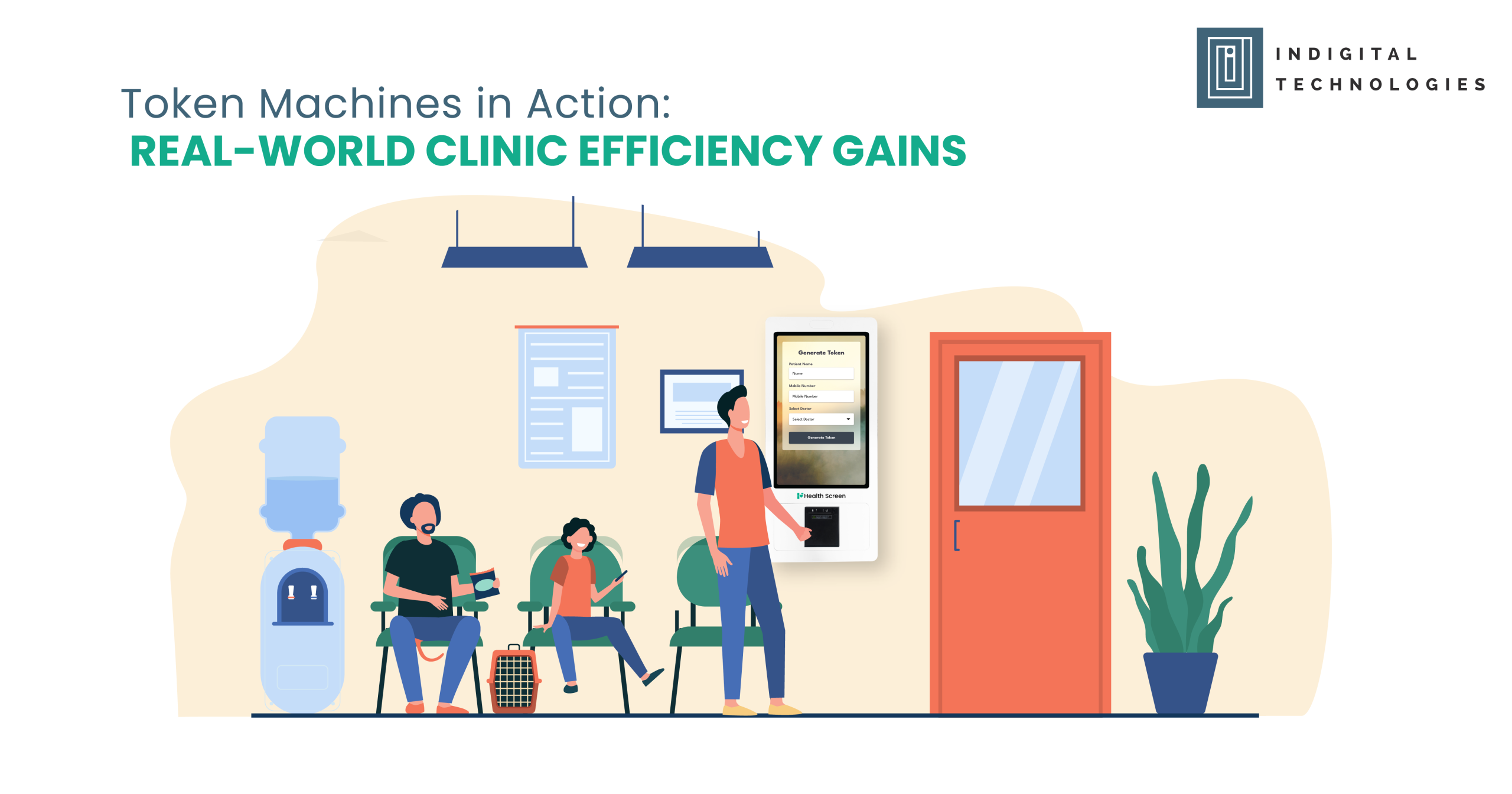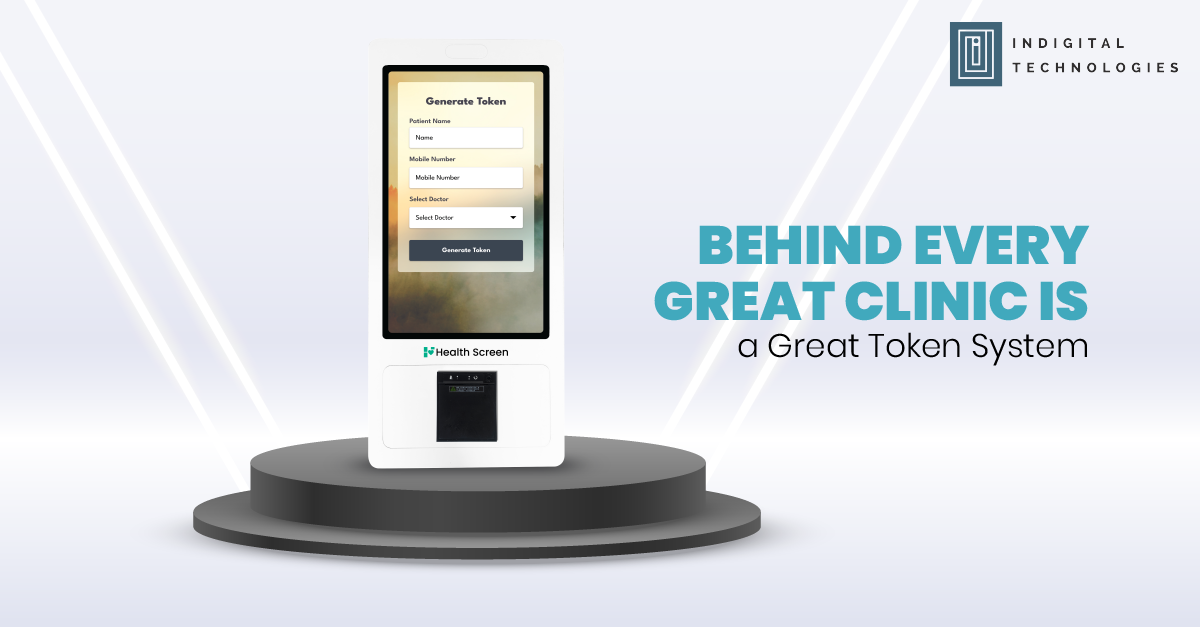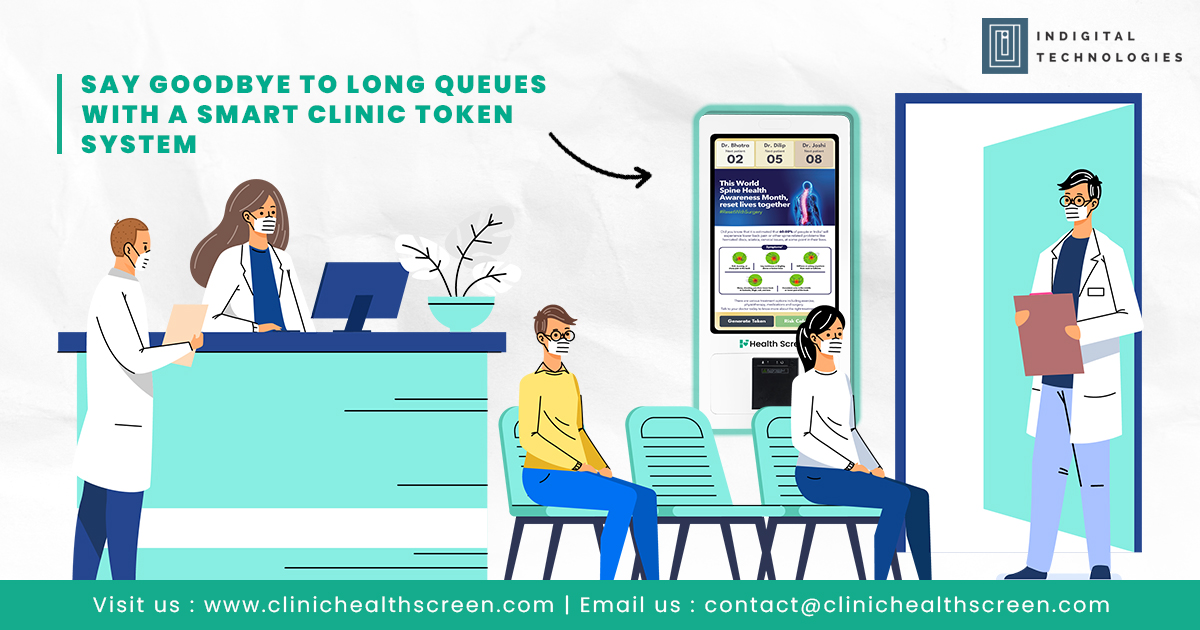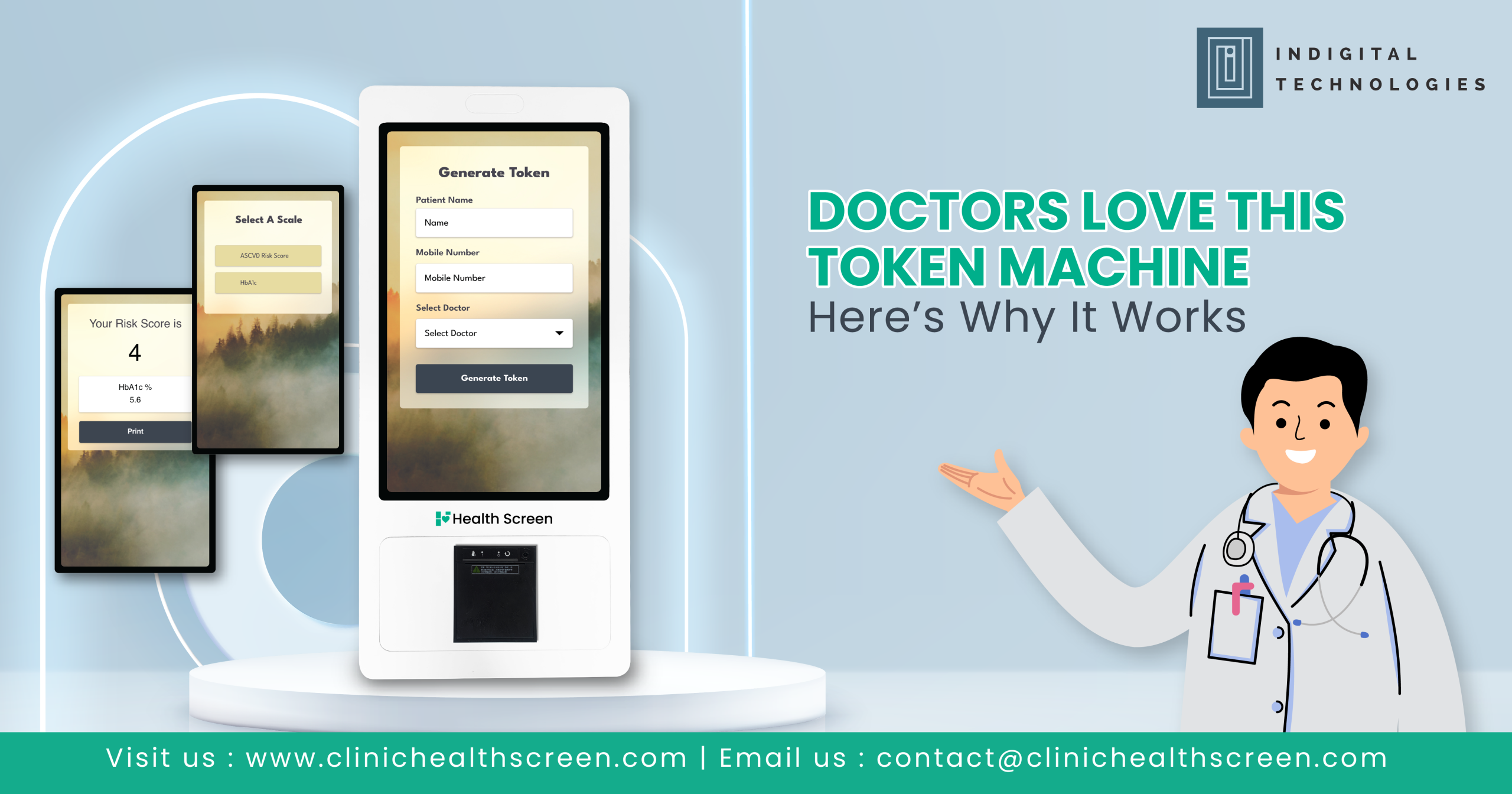A Familiar Problem That’s Holding Clinics Back
In many clinics across India, the process of managing patient queues still looks the same: verbal calls from reception, hand-written tokens, and long lines outside consultation rooms. While this method might seem manageable, the hidden costs are enormous — not just in time, but in patient satisfaction, clinic reputation, and doctor efficiency.
As healthcare evolves, so should its everyday operations. And one of the simplest upgrades a clinic can make is switching from manual queues to a digital token system.
What Manual Queues Really Cost You
1. Lost Time, Every Day
Manual queues lead to unpredictable delays. Doctors spend time checking who’s next, while reception staff handle crowd control instead of focusing on patient care or data entry.
2. Patient Frustration
Patients waiting without clarity on their turn grow anxious or agitated. This creates a tense clinic atmosphere and often leads to negative reviews or loss of repeat visits.
3. Staff Burnout
Managing noisy queues and complaints is stressful for staff. It distracts them from more important tasks like managing appointments, updating records, or assisting consultations.
4. Unprofessional Image
In a world that expects digital convenience, manual queueing reflects a dated clinic model. It sends the wrong message — especially to new or urban patients who value efficiency.
What You Gain by Going Digital
Adopting a token system isn’t just about organizing queues — it’s about creating a structured clinic environment where everyone benefits.
✔ Predictability
Doctors know who’s next. Staff stay focused. Patients wait without confusion. Everyone moves according to a system.
✔ Time Optimization
A token system helps clinics stay on schedule, see more patients without rushing, and avoid OPD overtime. Each consultation starts and ends more efficiently.
✔ Better Patient Experience
Patients are guided by token displays, voice prompts, or mobile alerts — enhancing comfort and reducing wait-time anxiety.
✔ Enhanced Clinic Perception
Digital tokens add a layer of professionalism to clinics. Patients associate the clinic with modernity, order, and better care.
What Makes Token Systems a Strategic Upgrade
Many modern token systems go beyond queuing. They are designed to add value to multiple aspects of clinic management:
- Visual displays with real-time queue status
- Voice alerts for token calls
- Support for multiple doctors or departments
- Daily reports on patient flow
- Built-in health education content on display screens
- Custom token slips with clinic or therapy branding
These systems integrate seamlessly into the clinic without disrupting the core workflow — making adoption easy and impact immediate.
For Pharma Managers: A Hidden Opportunity
Pharma professionals often look for new ways to deepen doctor engagement. Token systems provide that opportunity, indirectly but effectively.
Clinic Efficiency, Powered by You
Recommending or co-sponsoring token systems positions your brand as a value enabler — a partner in streamlining clinic operations.
High-Visibility Branding
Token displays can carry campaign visuals, disease awareness content, or subtle therapy branding during patient wait time — a non-intrusive but memorable touchpoint.
Enabling Therapy Education
Screens within token systems can show short, targeted educational content about your therapy area, helping build awareness without the need for active promotion.
How Clinics Can Make the Switch
Transitioning from manual to digital queues is easier than it seems. Most token systems are plug-and-play, require minimal training, and begin delivering results from day one.
Key factors to consider:
- Queue capacity and patient volume
- Number of consultation rooms or specialists
- Space for a small screen or token counter
- Preferred level of customization or branding
Even clinics with modest budgets or space constraints can find a system that fits — especially with models designed specifically for small to mid-size practices.
Final Word
Manual queues are no longer sustainable for any clinic aiming to provide timely, quality healthcare. The cost of sticking with the old way isn’t just inefficiency — it’s missed opportunities to elevate patient satisfaction, optimize time, and build trust.
A token system is more than a tech tool — it’s a clinic upgrade that pays for itself in saved time, better workflow, and improved patient experience. For pharma managers, it’s a chance to support your doctors in a way that matters daily.
Doctors Love This Token Machine – Here’s Why It Works
A Simple Tool Making a Big Impact in Clinics
In the race toward better healthcare delivery, not every solution needs to be complex. Some of the most impactful upgrades are the simplest — like replacing a manual patient queue with a smart token system.
Doctors across specialties are increasingly turning to digital token machines, not because they’re flashy, but because they solve a problem that has persisted for decades: disorganized patient flow.
And once implemented, most doctors agree — this change is one they wish they had made sooner.
What Makes a Token Machine “Doctor Approved”?
1. It Restores Focus to the Consultation Room
Without a token system, doctors often have to pause consultations, check who’s next, or deal with interruptions from staff. A token machine handles this silently and effectively. Doctors can focus solely on the patient in front of them — which improves clinical quality and decision-making.
2. It Brings Structure to the Day
Token systems help manage OPD schedules more effectively. When patient flow is organized, doctors are less likely to overrun consultation hours, and waiting patients remain informed about their turn — reducing stress for everyone.
3. It Minimizes Staff Distraction
Doctors no longer need to direct their staff to manage queues. Receptionists are freed from repeating token numbers or pacifying impatient visitors. The token system becomes the neutral, automated queue manager.
4. It Supports Multi-Specialty and High-Volume Clinics
Many token machines are built to handle multiple rooms, doctors, or departments. Whether you’re in a solo practice or a hospital OPD, token systems can be configured to fit your setup.
The Token Machine Experience: What’s Actually Happening?
Here’s a closer look at how a token machine works within a clinic:
- Patients take a token on arrival — either printed or digital.
- Token numbers are displayed on a screen, showing which number is currently being seen.
- Voice alerts or screen updates notify when the next patient is called.
- Doctors can call the next patient with a simple tap or automatically after each consultation.
- The queue is updated in real-time, creating a calm, predictable environment.
The result? No more shouting patient names, no more crowding outside consultation rooms, and no more manual corrections when patients complain about skipped turns.
Value Beyond Queue Management
Modern token systems also come with smart, doctor-centric enhancements:
- Visual Displays With Health Content: While patients wait, screens can display health awareness tips, specialty-specific information, or seasonal care messages.
- Custom Branding: Some systems allow clinic name, logo, or even pharma brand visuals to appear subtly on screen or printed tokens.
- Integrated Metrics: Doctors can access basic analytics — average consultation time, peak hours, patient volume — helping them plan more efficiently.
These additional features are what turn a functional tool into a daily practice enhancer.
A Win for Pharma Managers, Too
Pharma professionals looking to build stronger, non-intrusive engagement with doctors have found token machines to be a valuable conversation starter.
Therapy-Aware Branding
Token displays can be used to showcase therapy-related visuals or awareness messages — subtly reinforcing the pharma brand during wait times.
Clinic Support = Trust Building
Recommending or supporting the installation of token systems allows pharma reps to go beyond selling — they offer a tangible solution to improve the doctor’s everyday environment.
Better Context for Patient Education
When token systems support educational video content, it opens the door for therapy reinforcement before patients even enter the consultation room.
What Doctors Should Look for in a Token System
Not all token machines are built the same. Key features that doctors love include:
- Simple interface with one-tap patient call
- Support for multi-room and multi-doctor setups
- Voice + visual alerts
- Real-time token updates on large display screens
- Low-maintenance hardware with reliable uptime
- Space for adding educational or branded content
Some systems are even bundled with reception tablets and mounting accessories for plug-and-play convenience.
Final Thoughts
Doctors don’t need complicated systems — they need solutions that work quietly, reliably, and effectively. A good token machine does exactly that. It reduces OPD chaos, improves time efficiency, and creates a more patient-friendly experience.
Most importantly, it gives doctors back control of their time and their practice.
For pharma managers and healthcare professionals, it’s a clear opportunity to support meaningful, tech-forward changes in clinical practice — in a way that benefits both brand visibility and patient care.





